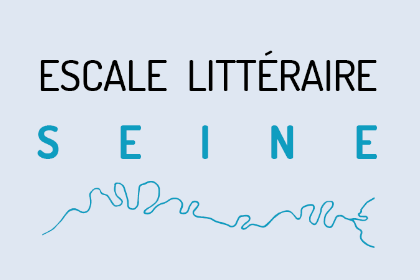Paris - Louvre - Invalides
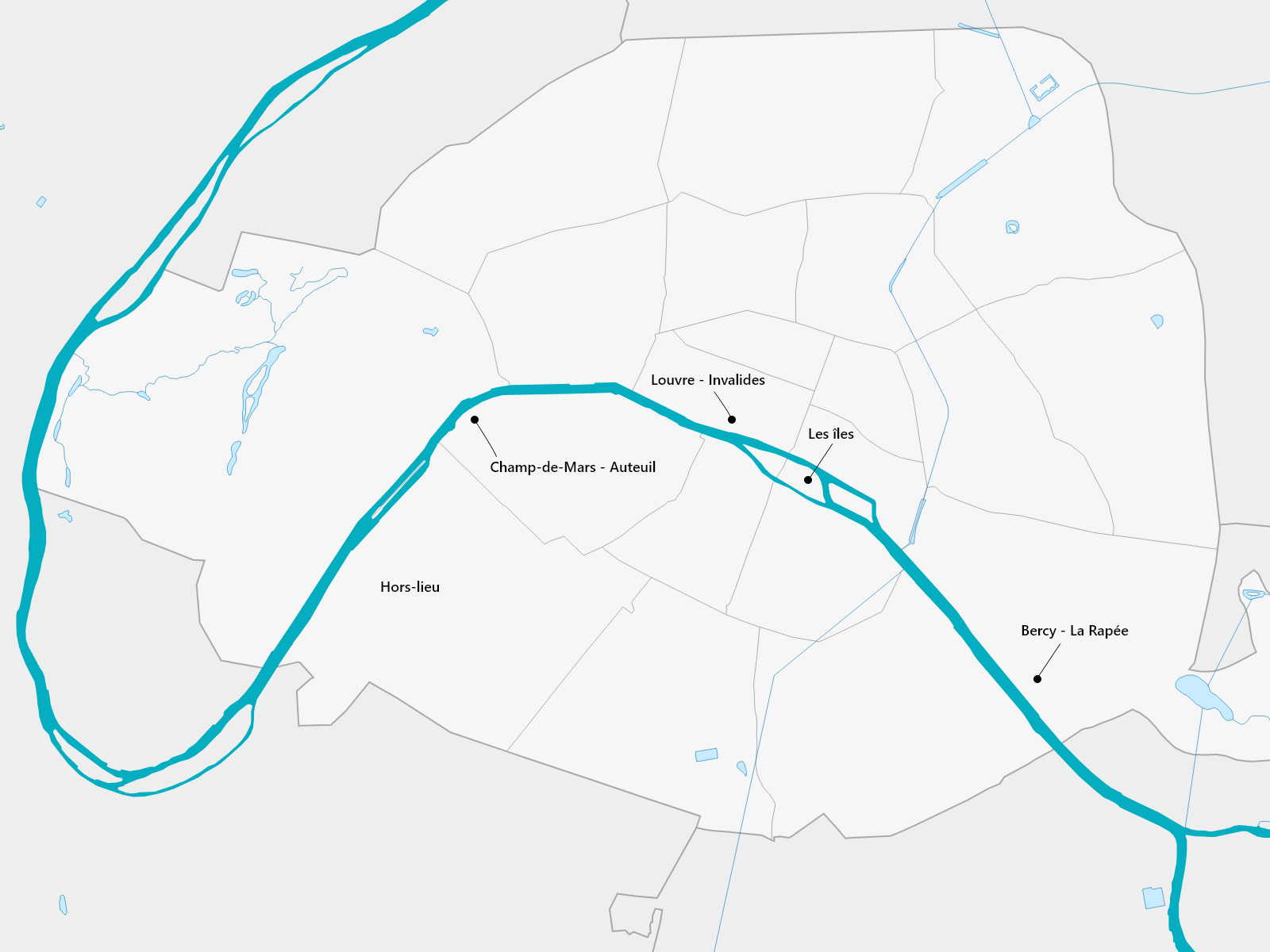
At first, the Seine river was a barrier and the site now known as Paris, a ford. In so many different ways, the Ville Lumière retains, even to this day, its connective role. The river, on the other hand, no longer truly separates peoples from each other. Quite the contrary, it is a federating force: the original antagonist of Paris was to become its most important ally.
For Julius Caesar, the Seine divides the habitable land into distinct Gallic provinces. For Jacques Réda, it unites the poet’s self with the red fire alarm standing on the opposite shore. Between the two the river flows, a distinctive border turning to blurry mirror. And two thousand years passing by.
In medieval chronicles the river is shown as a raging threat, and religion appears to be the only way of appeasing God’s wrath. There is truth to this. The catholic church did establish its dominance in the Parisian region by eradicating evils that were specifically fluvial: floods of course, but also miasma from adjacent wetlands and swamps, and crime and poverty proliferating along the banks. Ills of the body and of the spirit.
The collective imagination would eventually leave such issues behind, these being much too corporeal and earthly to the classical taste that was dawning. The river thus became, more than anything, a symbol. Embodying wealth, fertility, power, the Seine is heralded as a national symbol in works by Malherbe, Racine, and even in later patriotic poems such as du Boccage’s La Colombiade.
Soon more intimate scenes were to appear, in which the Seine river would play the role of a confidante or even of a friend. This is seen in works by Anne de La Vigne, Antoinette Deshoulières, Paul Pellisson, and remains prevalent more than one hundred years later in pastoral elegies like the one Marceline Desbordes-Valmore titled “À la Seine”. Bridging the gap between the 17th and 19th centuries, this early romantic trait also shines through in the 18th-century Enlightenment poetics of Lebrun-Pindare and Montanclos.
In multiplying the technical innovations that allowed Parisians to tame their great river and harvest its natural power, the Seine by the 1830s appeared hybridized. Novelists insisted on highlighting the long-lost primitive bucolic charm only found now in certain secret nooks, while hailing the water body as a modern icon of urban productivity (or depravity). Balzac, Hugo and their followers glorify the Seine, and make it into an intrinsic part of mythical Paris.
Somehow, the more this river is set in stone the more it strikes the imagination. Once decidedly illustrious, the Parisian Seine started segmenting into areas of particular interest, worthy of panoramic description or poetic transfiguration. The port de Bercy is offered up by Daudet; the pont Mirabeau, by Apollinaire. Zola, Hemingway and Aragon sketch the île Saint-Louis, while Houellebecq peers into Paris-Plages, and Anna de Noailles takes us down the bend to Saint-Cloud and Sèvres. A few twists further, towards Neuilly, Judith Gautier takes us canoeing much like Maupassant did before along the banks of Argenteuil and Croissy.
As a whole, the body of texts starring the Seine in Paris and its suburbs provides new insight into certain feature focal points along the river’s path. Foremost among these is an expected item: Notre-Dame, with its arch buttresses like “the ribs of a gigantic fish”, according to Théophile Gautier (Judith’s father). Close rivals to the world’s most famous gothic monument include the Pont-Neuf, the old Louvre, and the Tour de Nesle (demolished in 1665, legend has it a queen used to throw her lovers to the river from this tower). The macabre note rings even louder with the Morgue and the ever-popular Inconnue de la Seine. Enough maybe to alter one’s sightseeing priorities.
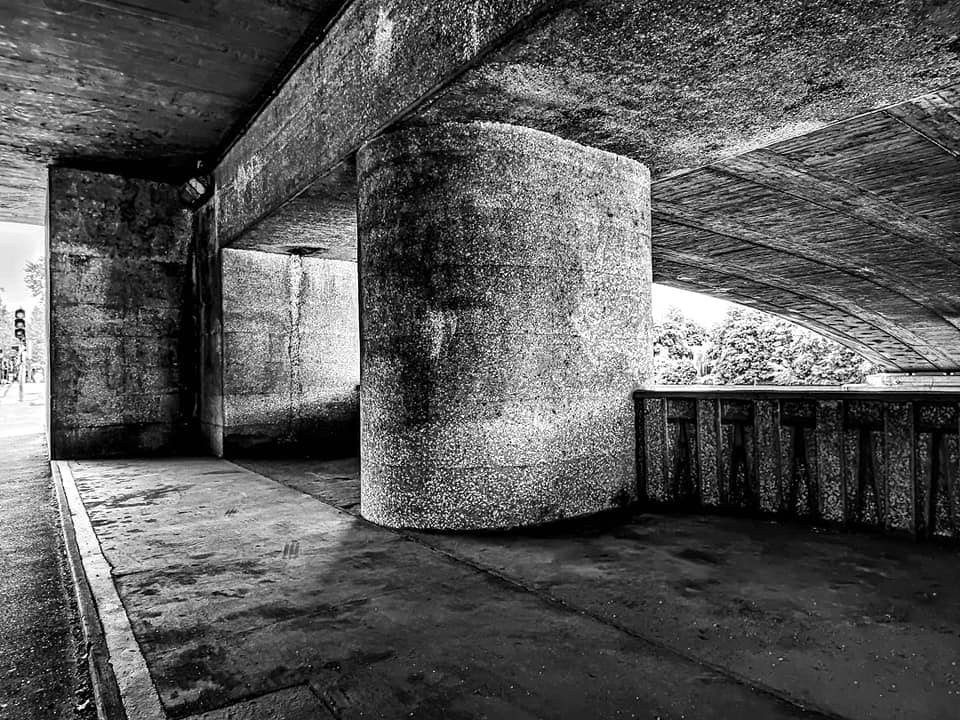 Pont © François Guillotte
Pont © François Guillotte
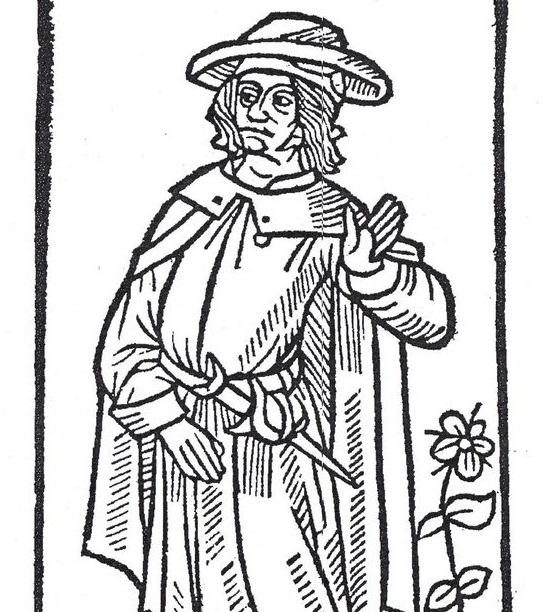
« Ballade des dames du temps jadis », 1461 / Paris-Louvre-Invalides
François VILLON

“Ballade des dames du temps jadis” is one of François de Montcorbier’s, alias François Villon, (1431-c. 1463) most famous poem. Embellishing on the theme of universal death and lives taken away by time (where are the snows of yesteryear!), the poet prone to impiety mentions one after the other twelve renowned women of past ages, one of whom was famous for drowning her lovers in the Seine from the top of the Tour de Nesle. The reference to this popular legend rooted in an authentic political scandal from the previous century introduces the character of Jean Buridan (1292–1363), a philosopher who instigated religious scepticism and who is said to have achieved to escape from the queen’s clutches: the bloody storyline has reportedly been developed from the university professor’s confessions. Ladies succeed one another, tales remain.
« […]
Semblablement, où est la royne
Qui commanda que Buridan
Fust jetté en ung sac en Seine ?
Mais où sont les neiges d’antan ! »
Orthographe modernisée :
« De même, où est la Reine
qui fit mettre Buridan dans un sac,
pour le jeter à la Seine ?
Où sont donc les neiges de cet hiver ? »
(traduction de Jean-Claude Mühlethaler, in François Villon, Lais, Testament, Poésies diverses, avec Ballades en jargon, Champion Classiques, collection Moyen-Âge, 2004, p.102.
VILLON, François. « Ballade des dames du temps jadis » [1461], Le Grand Testament, dans Œuvres complètes de François Villon, édition préparée par La Monnoye, mise au jour, avec notes et glossaire par Pierre Jannet, Paris, Lemerre, 1876, p. 34.
16th-17th century | Poems | In | Under
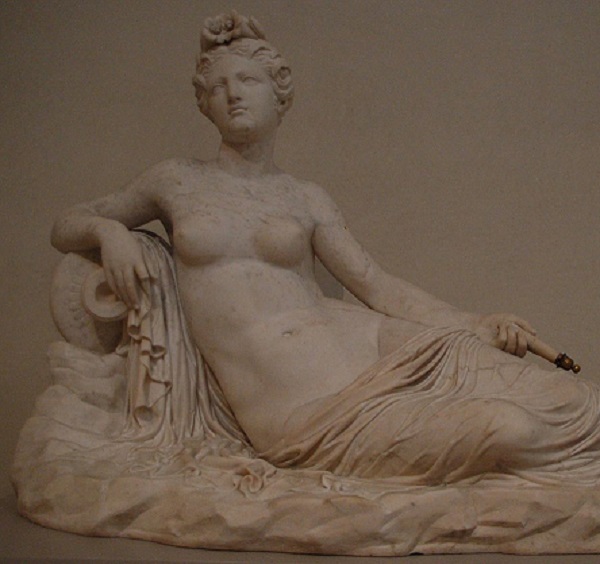
La Nymphe de la Seine, 1660 / Paris-Louvre-invalides
Jean RACINE

The very first publication by the great tragedian Jean Racine (1639–1699), author of Andromache (1667), Iphigenia (1674), Phaedra (1677) and many more, was an ode entitled La Nymphe de la Seine (1660). This long encomiastic poem written in honour of the marriage of Louis XIV to the infanta Maria Theresa of Austria, daughter of Philip IV, King of Spain, pays tribute to a primarily political alliance that the Sun King accepted in order to respect the 1659 Treaty of the Pyrenees. The context therefore explains the author’s emphasis on the love between the two spouses (which we do not want to doubt). We also understand the many round trips between the waters of the Tagus and the Seine, whose amalgam—the ultimate symbol of the two kingdoms’ peaceful union—eventually provides a journey towards the biblical banks of the Jordan River, God’s native land, under the pen of the young Jansenist.
« Je suis la nymphe de la Seine ;
C’est moi dont les illustres bords
Doivent posséder les trésors
Qui rendoient l’Espagne si vaine.
Ils sont des plus grands rois l’agréable séjour ;
Ils le sont des plaisirs, ils le sont de l’amour ;
Il n’est rien de si doux que l’air qu’on y respire ;
Je reçois les tributs de cent fleuves divers ;
Mais de couler sous votre empire,
C’est plus que de régner sur l’empire des mers.
Oh ! que bientôt sur mon rivage
On verra luire de beaux jours !
Oh ! combien de nouveaux Amours
Me viennent des rives du Tage !
Que de nouvelles fleurs vont naître sous vos pas !
Que je vois après vous de graces et d’appas
Qui s’en vont amener une saison nouvelle !
L’air sera toujours calme et le ciel toujours clair ;
Et près d’une saison si belle
L’âge d’or seroit pris pour un siècle de fer.
[…]
J’avois perdu toute espérance,
Tant chacun croyoit malaisé
Que jamais le ciel apaisé
Dût rendre le calme à la France :
Mes champs avoient perdu leurs moissons et leurs fleurs ;
Je roulois dans mon sein moins de flots que de pleurs ;
La tristesse et l’effroi dominoient sur mes rives ;
Chaque jour m’apportoit quelques malheurs nouveaux :
Mes nymphes pâles et craintives
A peine s’assuroient dans le fond de mes eaux.
De tant de malheurs affligée,
Je parus un jour sur mes bords,
Pensant aux funestes discords
Qui m’ont si long-temps outragée ;
Lorsque d’un vol soudain je vis fondre des cieux
Amour, qui me flattant de la voix et des yeux :
Triste nymphe, dit-il, ne te mets plus en peine ;
Je te prépare un sort si charmant et si doux,
Que bientôt je veux que la Seine
Rende tout l’univers de sa gloire jaloux.
Je t’amène après tant d’années,
Une paix de qui les douceurs
Sans aucun mélange de pleurs
Feront couler tes destinées.
Mais ce qui doit passer tes plus hardis souhaits ;
Une reine viendra, sur les pas de la paix.
Comme on voit le soleil marcher après l’aurore,
Des rives du couchant elle prendra son cours :
Et cet astre surpasse encore
Celui que l’orient voit naître tous les jours.
[…]
Régnez donc, princesse adorable,
Sans jamais quitter le séjour
De ce beau rivage, où l’Amour
Vous doit être si favorable.
Si l’on en croit ce dieu, vous y devez cueillir
Des roses que sa main gardera de vieillir,
Et qui d’aucun hiver ne craindront l’insolence ;
Tandis qu’un nouveau Mars, sorti de votre sein,
Ira couronner sa vaillance
De la palme qui croît aux rives du Jourdain. »
RACINE, Jean. La Nymphe de la Seine : A la Reine, ode [1660], Théâtre de Jean Racine, précédé de la vie de l’auteur, Avignon, P. Luxembourg Bonnet, 1810, t. III, p. 313-319.
En ligne
16th-17th century | Poems | On | Along
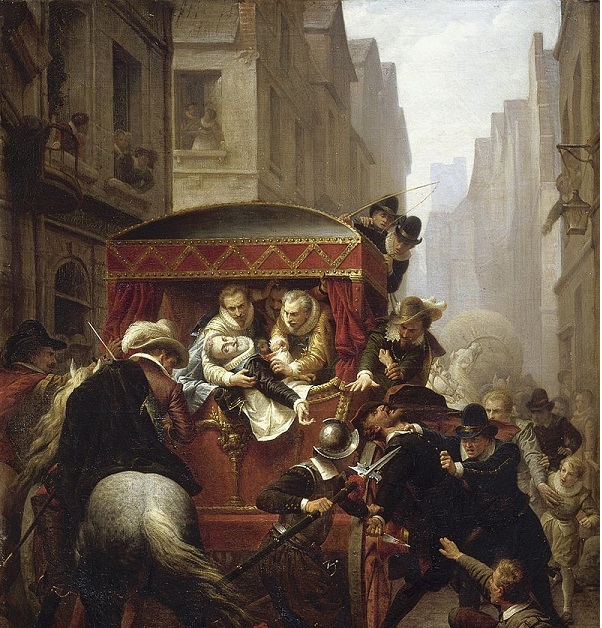
« Sur l’attentat d’Henry le Grand », 1607 / Paris-Louvre-Invalides
François MALHERBE

On 19 December 1605, a man with a dagger attempted to murder Henry IV who, back from a hunt, was riding on horseback. In order to conjure up France’s fear of the fortunately failed assassination attempt, François de Malherbe (1515–1628) imagined the god of the Seine’s reaction, out of the water to admire the Louvre’s Great Hall that the king was having built.
« Au point qu’il écuma sa rage,
Le Dieu de Seine estoit dehors
A regarder croistre l’ouurage
Dont ce prince embellit ses bords ;
Il se resserra tout à l’heure
Au plus bas lieu de sa demeure ;
Et ses Nymhes dessous les eaux,
Toutes sans voix et sans haleine,
Pour se cacher furent en peine
De trouuer assez de roseaux. »
Français modernisé :
"Au point qu’il écuma sa rage,
Le Dieu de Seine était dehors
À regarder croître l’ouvrage
Dont ce prince embellit ses bords :
Il se resserra tout à l’heure
Au plus bas lieu de sa demeure :
Et ses Nymphes desosus les eaux
Toutes sans voix, et sans haleine,
Pour se cacher furent en peine
De trouver assez de roseaux."
(François Malherbe, « Ode sur l’attentat commis en la personne de Sa Majesté, le 19 décembre 160 »5, Poésies, édition d’Antoine Adam, Gallimard, NRF, 1971, p. 81, v. 91-100.)
MALHERBE, François de. « Sur l’attentat commis en la
personne de Henry le Grand, le 19. de décembre 1605 » [1607],
Les Poésies de messire François de Malherbe, précédées de sa vie
par le marquis de Racan, texte revue sur les éditions originales
et annoté par Ludovic Lalanne, Paris, Hachette, 1862, p. 75.
En ligne
16th-17th century | Poems | On | In
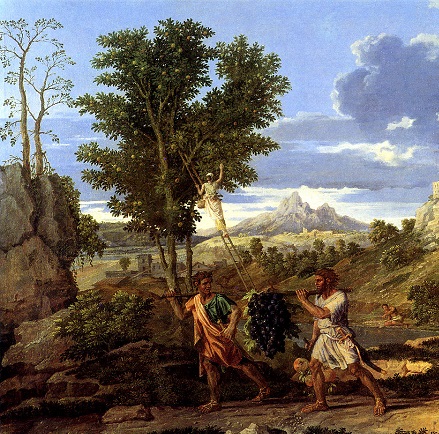
« Récit d’un berger », 1615 / Paris-Louvre-Invalides
François de MALHERBE

The Seine, symbolising both Paris itself along with, in a broader sense, the Kingdom of France, often serves as a concrete substrate to the biblical image of a promised land bathed in a river of milk and honey. The court’s official poet, François de Malherbe (1515–1628) portrays this in a striking version, where the richness of the river is proven by a marvel, in producing a fruit it never had before—a pearl. This takes place at the end of a piece of poetry considered by the poet himself to be one of his best and which had the remarkable privilege of being recited in the Grande Salle de Bourbon at the Louvre in 1615, for a ballet held to celebrate the alliance between France and Spain.
« Vn siecle renaistra comblé d’heur et de joye,
Où le nombre des ans sera la seule voye
D’arriuer au trépas ;
Tous venins y mourront comme au temps de nos pères ;
Et mesmes les viperes
Y picqueront sans nuire, ou n’y picqueront pas.
La terre en tous endroits produira toutes choses,
Tous métaux seront or, toutes fleurs seront roses,
Tous arbres oliuiers ;
L’an n’aura plus d’hyuer, le jour n’aura plus d’ombre,
Et les perles sans nombre
Germeront dans la Seine au milieu des grauiers. »
Français modernisé :
"Un siècle renaîtra comblé d’heur et de joie,
Où le nombre des ans sera la seule voie
D’arriver au trépas :
Tous venins y mourront comme au temps de nos pères :
Et même les vipères
Y piqueront sans nuire, ou n’y piqueront pas.
La terre en tous endroits produira toutes choses :
Tous métaux seront or, toutes fleurs seront roses,
Tous arbres oliviers :
L’an n’aura plus d’hiver, le jour n’aura plus d’ombre,
Et les perles sans nombre
Germeront dans la Seine au milieu des graviers."
(Malherbe, "Récit d’un berger au ballet de Madame, princesse d’Espagne", Poésies, édition d’Antoine Adam, Gallimard, NRF, 1971, p. 171, v. 61-72.)
MALHERBE, François de. « Récit d’un berger au balet de Madame, princesse d’Espagne » [1615], Les Poésies de messire François de Malherbe, précédées de sa vie par le marquis de Racan, texte revue sur les éditions originales et annoté par Ludovic Lalanne, Paris, Hachette, 1862, p. 232-233.
En Ligne
16th-17th century | Poems | In | Under
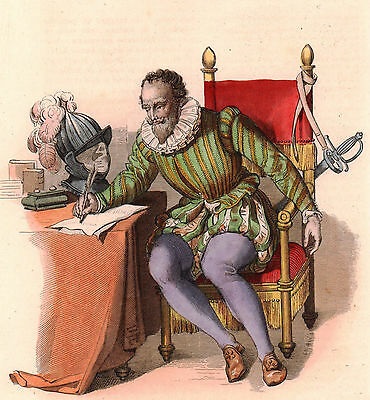
« Vers funèbres », 1630 / Paris-Louvre-Invalides
François de MALHERBE

The king who survived numerous attacks in the middle of the Wars of Religion eventually died on May 14, 1610. The whole of France mourned the loss of the man whom François de Malherbe (1515–1628) affectionately referred to as Henry the Great. In the stanzas he wrote on this topic, the poet first takes on the general sadness as his own before quickly taking pity on that of the grieving widow. The overflowing Seine therefore evokes both the abundant outpourings and anger in the face of tragedy.
« C’est bien à tout le monde vne commune playe,
Et le malheur que j’ay chacun l’estime sien ;
Mais en quel autre cœur est la douleur si vraye,
Comme elle est dans le mien ?
Ta fidèle compagne aspirant à la gloire
Que son affliction ne se puisse imiter,
Seule de cét ennuy me debat la victoire,
Et me la fait quitter.
L’image de ses pleurs, dont la source féconde
Iamais depuis ta mort ses vaisseaux n’a taris ;
C’est la Seine en fureur qui déborde son onde
Sur les quaiz de Paris. »
Français modernisé :
« C’est bien à tout le monde une commune plaie,
Et le malheur que j’ai, chacun l’estime sien ;
Mais en quel autre cœur est la douleur si vraie,
Comme elle est dans le mien ?
Ta fidèle compagne aspirant à la gloire
Que son affliction ne se puisse imiter,
Seule de cet ennui me débat la victoire,
Et me la fait quitter.
L’image de ses pleurs, dont la source féconde
Jamais depuis ta mort ses vaisseaux n’a tari ;
C’est la Seine en fureur qui déborde son onde
Sur les quais de Paris. »
MALHERBE, François de. « Vers funèbres sur la mort de Henry le Grand : stances » [1630], Les Poésies de messire François de Malherbe, précédées de sa vie par le marquis de Racan, texte revu sur les éditions originales et annoté par Ludovic Lalanne, Paris, Hachette, 1862, p. 179.
En ligne
16th-17th century | Poems | Along
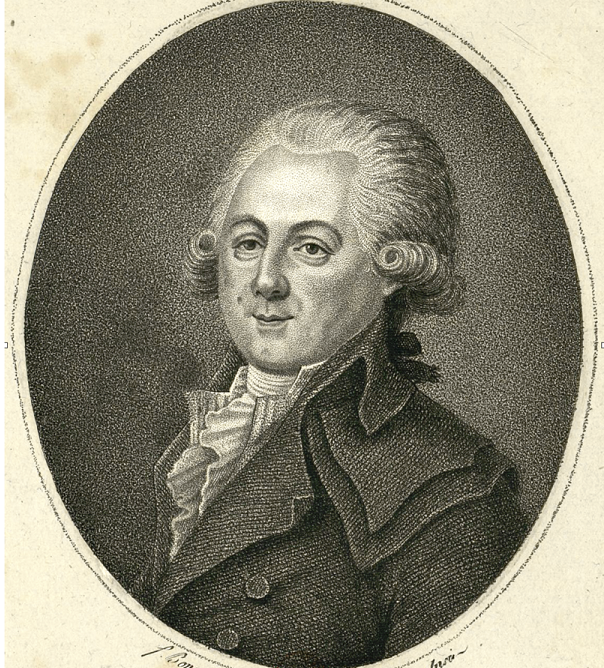
Tableau de Paris, 1781-88 / Paris-Louvre-Invalides
Louis-Sébastien MERCIER

“Let us walk”, suggests Louis-Sébastien Mercier (1740–1814) in one of the chapters from his Tableau de Paris (1781-88). One quickly goes from the Rue de la Tissanderie where Paul Scarron (1610–1660) lived, to the Rue du Temple, where one duke murdered another in the Middle Ages, and then onto one of the pathways of the Châtelet, where the Morgue was located at the time (and still would be for a further two decades). Each new spot of Paris that one encounters throughout this chapter is worthy of an anecdote of a few short lines, or of some detail of Parisian history or geography… Crossing the Seine reminds the author of a part of the legend of Henry IV of France, featuring a boatman reminiscent of our modern-day taxi drivers.
« Quand je passe la rivière au quai Malaquais ou des Quatre-Nations, il me revient en mémoire le discours de ce batelier, qui, tenant Henri IV dans son bateau et ne le connaissant pas, disait ne pas trop goûter les fruits de la paix de Vervins : « Il y a des impôts sur tout, jusqu’à ce misérable bateau avec lequel j’ai bien peine à vivre. — Le roi, continua Henri IV, ne compte-t-il pas mettre ordre à tous ces impôts-là ? — Le roi est un assez bon homme, répliqua le batelier, mais il a une maîtresse à qui il faut tant de belles robes et tant d’affiquets ! et c’est nous qui payons tout cela : passe encore si elle n’était qu’à lui ; mais on dit qu’elle se fit caresser par bien d’autres. »
MERCIER, Louis-Sébastien. « Promenons-nous », dans Tableau de Paris [1781-88], précédé d’une étude sur la vie et les ouvrages de Mercier par Gustave Desnoiresterres, Paris, Pagnerre ; Lecou, 1853, p. 64.
En ligne
18th century | Novel, short story | On
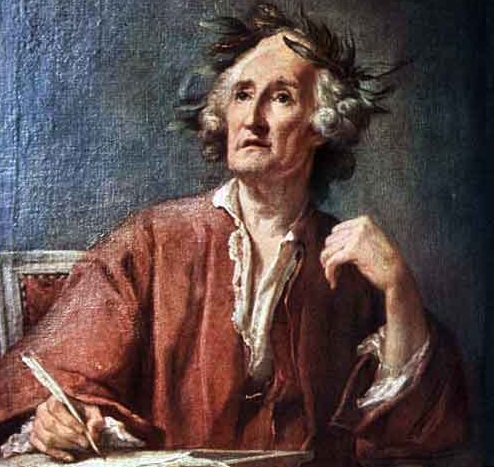
« Exegi monumentum », 1787 / Paris-Louvre-Invalides
LEBRUN-PINDARE

Ponce-Denis Écouchard-Lebrun (1729–1807), known as Lebrun-Pindare, had a close relationship with the Seine, as shown by the poem that made him famous, “Exegi monumentum” (1787). Here, the Parisian river, as a loyal and eternal accomplice, welcomes the poet’s lyrics in the face of Man’s mortal destiny. While this ode takes inspiration from ancient times (the title was taken from Horace), it makes a striking prediction, on the eve of the French Revolution, of a future that the author could not have foreseen: having praised the former monarchy, the Republic and the Empire in turn, his patriotic poetry would lead to him being housed next to the Seine in his old age, in one of the attics of the Louvre.
« Grâce à la muse qui m’inspire,
Il est fini ce monument
Que jamais ne pourront détruire
Le fer ni le flot écumant ;
Le ciel même, armé de la foudre,
Ne sauroit le réduire en poudre :
Les siècles l’essaieroient en vain.
Il brave ces tyrans avides,
Plus hardi que les pyramides,
Et plus durable que l’airain.
[…]
Cet hymne que j’achève
Ne périra point comme vous,
Vains palais que le faste élève
Et que détruit le temps jaloux.
Vous tomberez, marbres, portiques,
Vous dont les sculptures antiques
Décorent nos vastes remparts ;
Et de ces tours au front superbe
La Seine un jour verra sous l’herbe
Ramper tous les débris épars.
Mais tant que son onde charmée
Baignera l’empire des lis,
De ma tardive renommée,
Ses fastes seront embellis.
Elle entendra ma lyre encore
D’un roi généreux qui l’honore
Chanter les augustes bienfaits,
Ma lyre, qui dans sa colère
A d’une Thémis adultère
Consacré les lâches forfaits.
Élève du second Racine,
Ami de l’immortel Buffon,
J’osai, sur la double colline,
Allier Lucrèce à Newton.
Des badinages de Catulle
Aux pleurs du sensible Tibulle
On m’a vu passer tour-à-tour ;
Et sur les ailes de Pindare,
Sans craindre le destin d’Icare,
Voler jusqu’à l’astre du jour.
[…]
J’échappe à ce globe de fange :
Quel triomphe plus solennel !
C’est la mort même qui me venge :
Je commence un jour éternel.
Comme un cèdre aux vastes ombrages,
Mon nom, croissant avec les âges,
Règne sur la postérité.
Siècles ! vous êtes ma conquête ;
Et la palme qui ceint ma tête
Rayonne d’immortalité."
ÉCOUCHARD-LEBRUN, Ponce-Denis. « Exegi monumentum » [1787], dans Œuvres choisies de Lebrun, précédées d’une notice sur sa vie et ses ouvrages, Paris, Janet et Cotelle Libraires ; Aimé André Libraire, 1829, t. II, p. 135-138.
18th century | Poems | Along
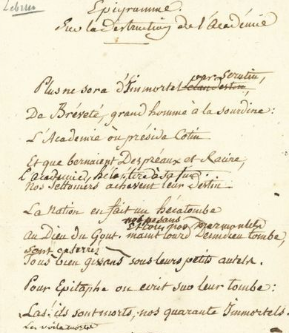
« Mes souvenirs, ou les deux rives de la Seine », c1795 / Paris-Louvre-Invalides
LEBRUN-PINDARE

None of the Seine’s recurring appearances in the poems of Ponce-Denis Écouchard-Lebrun (1729–1807)—known as Lebrun-Pindare—are as powerful or as curious as the one which turns the river into the raw material of an old man’s memories after a lifetime spent living beside it. The poet’s emotion surrounding this theme is such that the title, “Mes souvenirs, ou les deux rives de la Seine”, which in itself is already rather long, does not appear to be enough. It is accompanied by the following footnote: “Au sujet d’un logement que le Gouvernement venoit de m’accorder sur la rive droite de la Seine (au Louvre).” High recognition for the patriotism of a sexagenarian who would henceforth be hallowed as the poet of the Revolution, whose past as a courtier and future as Bonapartist were simply a few more twists in a life as tortuous as the Seine.
« Qu’un autre, d’une âme insensée,
Se vieillisse en plongeant ses yeux dans l’avenir !
Moi, je rajeunis ma pensée
Par les charmes du souvenir.
Dans l’asile de ma vieillesse,
Un sort heureux présente à mes regards contents
L’aspect des lieux où ma jeunesse
Vit éclore ses doux printemps.
Paisible nymphe de la Seine,
Que ton onde me plaît ! que tes bords me sont chers !
Ton onde est pour moi l’Hippocrène,
Et tes bords me sont l’univers.
Tu sembles de mes destinées
Réunir à-la-fois et partager le cours :
Là coulèrent mes jeunes années ;
Ici coulent mes derniers jours.
Que mon œil aime à reconnoître
La rive où se cachoit mon timide berceau !
Mon ame, qui semble y renaître,
De plus loin brave le tombeau.
Ranimés par d’heureux prestiges,
D’un palais abattu les marbres, les jardins
Se relèvent, fiers des vestiges
Qu’ont laissé mes pas enfantins.
Les voilà ces jeunes dryades
Qui jadis m’ombrageoient de leurs rameaux épars !
Ce jet lancé par les naïades
Rafraîchit encor mes regards !
Parmi des fleurs toujours écloses,
Errant dans les détours de ces dédales verts,
Mon souvenir cueille des roses,
Et peuple ces bosquets déserts.
Que l’aurore m’y paroit belle !
Un nouveau jour me luit, plus riant et plus pur ;
Et tout l’or dont il étincelle
M’enrichit le céleste azur.
[…]
Ce premier sentiment de l’ame
Laisse un long souvenir que rien ne peut user ;
Et c’est dans la première flamme
Qu’est tout le nectar du baiser.
Âge aimant, âge d’innocence,
Âge où le cœur jamais n’a de replis obscurs ;
Ta pudeur feint peu la décence ;
Tes goûts sont vrais ; tes feux sont purs !
Ainsi, quand la vieillesse arrive,
Du long fleuve des ans je remonte le cours ;
Et je retrouve sur la rive
L’âge des jeux et des amours. »
ÉCOUCHARD-LEBRUN, Ponce-Denis, « Mes souvenirs, ou les deux rives de la Seine » [c1795], dans Œuvres choisies de Lebrun, précédées d’une notice sur sa vie et ses ouvrages, Paris, Janet et Cotelle Libraires ; Aimé André Libraire, 1829, p. 124-129.
18th century | Poems | Along

: « À mon porteur d’eau », 1755 / Paris-Louvre-Invalides
Charlotte BOURETTE

The Seine was dear to Charlotte Bourette (1714–1784), also called “la Muse limonadière” (the lemonade-making muse). The epistle she composed for her water deliveryman is quite telling. The poet, owner of the coffee shop “L’Allemand,” located on rue Croix-des-Petits-Champs, introduces us to the uses of the Seine water in her daily life. The choice of such prosaism, still extremely rare in the 18th-century poetry, announces in a certain way the efforts that poets of the following century will make. More sensitive to modest fates, they will strive to liberate themselves from the common themes of nymphs, goddesses, personifications, and other sorts of allegories all borrowed to Greek or Roman Antiquity.
« Un des Arts que je confidére
Eft celui de porter de l’eau,
Et fi ce n’eft pas le plus beau,
C’eft pourtant le plus néceffaire.
O vous, qui la portez chez moi,
Je vous regarde, fur ma foi,
Comme un homme de conféquence ;
Et plus qu’aucun homme de France,
Vous méritez affurément,
De mes Vers le fincere hommage !
On fait que l’eau dans un moment
Etteint un grand embrafement ;
Mais ce qui me plaît davantage,
C’eft que fon merveilleux ufage,
Procure un grand foulagment :
Nous fait tous vivre abondament ;
Elle entretient ma Caffetiere ;
Dans les apprêts de mon tripot,
Elle entre de toute manière ;
Tout cela fait bouillir mon pot,
Et fournit à d’autres dépenfes,
Qui dans un Caffé font immenfes ;
Sans parler de tant de rubans,
Colifichets, ajuftemens :
J’aime cette riviere de Seine,
Dont l’eau fans doute eft fouveraine,
Pour éteindre le feu d’amour !
Pour moi, je m’en fers chaque jour,
Lorfqu’il faut nettoyer ma face,
Où le fard n’eut jamais de place :
Et l’eau fait ma félicité,
Otant jufqu’à la moindre craffe,
Pour maintenir ma propreté. »
Orthographe modernisée :
« Comme un homme de conséquence ;
Et plus qu’aucun homme de France,
Vous méritez assurément,
De mes Vers le sincère hommage !
On fait que l’eau dans un moment
Eteint un grand embrasement ;
Mais ce qui me plaît davantage,
C’est que son merveilleux usage,
Procure un grand soulagement :
Nous fait tous vivre abondamment ;
Elle entretient ma Cafetière ;
Dans les apprêts de mon tripot,
Elle entre de toute manière ;
Tout cela fait bouillir mon pot,
Et fournit à d’autres dépenses,
Qui dans un Café font immenses ;
Sans parler de tant de rubans,
Colifichets, ajustements :
J’aime cette rivière de Seine,
Dont l’eau fans doute est souveraine,
Pour éteindre le feu d’amour !
Pour moi, je m’en fers chaque jour,
Lorsqu’il faut nettoyer ma face,
Où le fard n’eut jamais de place :
Et l’eau fait ma félicité,
Otant jusqu’à la moindre crasse,
Pour maintenir ma propreté. »
BOURETTE, Charlotte. « À mon Porteur-d’Eau », La Muse limonadière, ou Recueil d’ouvrages en vers et en prose : Par Madame Bourette, cy-devant Madame Curé, avec Les Différentes Piéces qui Lui ont été Adreffées, Paris, Sébastien Jorry, 1755, p. 253-254.
En ligne
18th century | Along
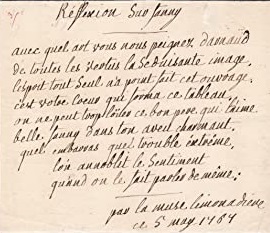
« À Voltaire », 1760 / Paris-Louvre-Invalides
Charlotte BOURETTE

On the 31st December 1760, Voltaire (1694–1778) said the following to the Count d’Argental (1700–1788): “Miss d’Argental is very good to deign to offer a present to the Muse limonadière; I thank her very much indeed, it is the only honest way to get off the hook with this muse.” The offering was a porcelain mug, an undoubtedly fitting present for its recipient: Charlotte Bourette (1714–1784), a poet, who owned a café popular among poets and philosophers. She thanked Voltaire for his attention by gifting him a few verses in which Seine rhymes with Hippocrene (the source of the muses in Greek mythology). However, the café owner’s response is written in such a way that one can read some gratefulness and a lot of modesty, or rather some disdainful sarcasm. To judge, one must remember that this rhyme had already been addressed to her five years earlier, by someone else: “La fource des beaux Vers n’eft plus cet Hypocrène, / Que jadis on a tant chanté ; / Elle eft dans cette vafte & fuperbe Cité, / Qu’arrofe le Dieu de la Seine.” Anonymous verses taken from “Invitation à ceux qui afpirent au titre de Bel-Esprit”, which Bourette had reproduced in La Muse limonadière (1755).
« Législateur du goût, dieu de la poésie,
Je tiens de vous une coupe choisie,
Digne de recevoir le breuvage des cieux.
Je voudrois, pour vous louer mieux,
Y puiser les eaux d’Hippocrène ;
Mais vous seul les buvez, comme moi l’eau de Seine. »
BOURETTE, Charlotte. « À Voltaire, de qui elle avait reçu une tasse de porcelaine » [1761], dans Philippe Busoni [dir.], Chefs-d’œuvre poétiques des dames françaises : Depuis le treizième siècle jusqu’au dix-neuvième, Paris, Paulin, 1841, p. 251.
En ligne
18th century | Personal essay | In | Under
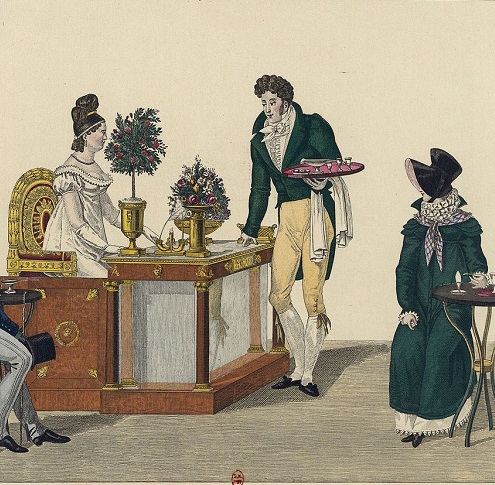
« Hommage à la paix », 1763 / Paris-Louvre-Invalides
Charlotte BOURETTE

Charlotte Bourette (1714–1784), known as the Muse limonadière, published a number of short works aimed to make herself known among a carefully selected audience of royalty and celebrities through pieces of prose and poetry diffusing her ingenuity and the delicacy of her mind. Herself the daughter of a café owner, she owned a café on the Rue Croix-des-Petits-Champs. When this user of double-entendre mentions the Seine in the course of a tribute to peace, this, of course, turns into a tribute to King Louis “the Well-Beloved”, of whom the admiring river is perhaps just a mirror after all.
« D’une Majefté douce il brille environné,
La Seine qui le voit de profil fur fa rive
Pour le contempler plus longtemps
Ralentit en paffant fon onde fugitive,
Heureufe de porter au Pays des Normans
Un prétexte fi beau de fes retardemens. »
Orthographe modernisée :
« D’une Majesté douce il brille environné,
La Seine qui le voit de profil sur sa rive
Pour le contempler plus longtemps
Ralentit en passant son onde fugitive,
Heureuse de porter au Pays des Normands
Un prétexte si beau de ses retardements. »
BOURETTE, Charlotte. Hommage à la paix, par la Muse Limonadière de la Rue-Croix des Petits-Champs, ce 4 Mai 1763, Paris, Sébastien Jorry, 1763, p. 7.
En ligne
18th century | In

La Peau de chagrin, 1831 / Paris-Louvres-Invalides
Honoré de BALZAC

The beginning of The Wild Ass’ s Skin (1831) takes place along the Seine River. Honoré de Balzac (1799–1850) uses all his resources to convince the reader that Raphaël de Valentin who is walking to the Seine will drown himself. “There is something great and terrible about suicide”, he writes, then adds: “Every suicide is an awful poem of sorrow” (p. 8). On the way, the suicidal man meets thanks to his imagination some of his most renowned predecessors, who look like grandiloquent leading lights next to the modest staff of the banks, shopkeepers, sailors and beggars that we walk by every day without a second thought. It might be that contrast that decides the inconsolable protagonist who arrived above the water to postpone his death; that is all he will do.
« Il s’achemina vers le pont Royal en songeant aux dernières fantaisies de ses prédécesseurs. Il souriait en se rappelant que lord Castelreagh avait satisfait le plus humble de nos besoins avant de se couper la gorge, et que l’académicien Auger avait été chercher sa tabatière pour priser tout en marchant à la mort. Il analysait ces bizarreries et s’interrogeait lui-même, quand, en se serrant contre le parapet du pont, pour laisser passer un fort de la halle, celui-ci ayant légèrement blanchi la manche de son habit, il se surprit à en secouer soigneusement la poussière. Arrivé au point culminant de la voûte, il regarda l’eau d’un air sinistre. — Mauvais temps pour se noyer, lui dit en riant une vieille femme vêtue de haillons. Est-elle sale et froide, la Seine ! Il répondit par un sourire plein de naïveté qui attestait le délire de son courage, mais il frissonna tout à coup en voyant de loin, sur le port des Tuileries, la baraque surmontée d’un écriteau où ces paroles sont tracées en lettres hautes d’un pied : secours aux asphyxiés. M. Dacheux lui apparut armé de sa philanthropie, réveillant et faisant mouvoir ces vertueux avirons qui cassent la tête aux noyés, quand malheureusement ils remontent sur l’eau : il l’aperçut ameutant les curieux, quêtant un médecin, apprêtant des fumigations ; il lut les doléances des journalistes, écrites entre les joies d’un festin et le sourire d’une danseuse ; il entendit sonner les écus comptés à des bateliers pour sa tête par le préfet de la Seine. Mort, il valait cinquante francs, mais vivant il n’était qu’un homme de talent sans protecteurs, sans amis, sans paillasse, sans tambour, un véritable zéro social, inutile à l’État, qui n’en avait aucun souci. Une mort en plein jour lui parut ignoble, il résolut de mourir pendant la nuit, afin de livrer un cadavre indéchiffrable à cette société qui méconnaissait la grandeur de sa vie. Il continua donc son chemin, et se dirigea vers le quai Voltaire, en prenant la démarche indolente d’un désœuvré qui veut tuer le temps. »
BALZAC, Honoré de. La Peau de chagrin [1831], dans Œuvres complètes de H. de Balzac, Paris, Alexandre Houssiaux, 1855, t. XIV, p. 8-9.
En ligne
19th century | Novel, short story | On | Along

La Cyn-Achantide, 1811 / Paris-Louvre-Invalides
Fanny de BEAUHARNAIS

Prolific author, awarded poet and envied salonnière, Fanny de Beauharnais (1737–1813) remained fond of the spirit of 18th century conversation, an ideal she demonstrated by vigorously defending the role of women in literature. The last work she published in her lifetime was a long prose poem resembling a long tale. Absurd work in many ways, La Cyn-Achantide, ou le Voyage de Zizi et d’Azor (1811) pictures the conversation between two birds who reportedly were Empress Marie Louise’s pets. One, called Zizi, is a “winged cantor”, the other, named Azor, is “the nicest emblem of unfailing attachment and fidelity” (p. 6–7). The scene takes place on the eve of the celebrations for the imperial union, Zizi then begins a song to the glory of the Seine, the capital and France.
« Les deux intéressantes créatures furent transportées dans le Palais impérial, et déposées de suite dans le charmant asile désigné pour être leur demeure.
[…]
« Je sais que le fleuve de la Seine, toujours épris des charmes de Lutèce, qui se plaît à l’enrichir de ses ondes paisibles, et qui veut signaler sa reconnaissance envers le GRAND NAPOLÉON, dont les ordres ont multiplié dans cette capitale le bienfait de ses eaux ; je sais, dis-je, que dans ce moment même il rassemble ses Néréides ; qu’il exige que, sortant de leurs grottes humides et prenant des vêtements semblables à ceux que portent maintenant les Françaises, elles se mêlent avec elles, et, comme elles, célèbrent ce grand jour par des danses et des jeux tels, à peu près, et plus aimables encore, que ne furent ceux institués lors de sa jonction avec la Marne, jadis sa rivale, et devenue, par un accord heureux, son inséparable compagne. […] »
BEAUHARNAIS, Fanny de. La Cyn-Achantide, ou le Voyage de Zizi et d’Azor : Poëme en cinq livres, Paris, Houze, 1811, p. 82-83.
19th century | Along
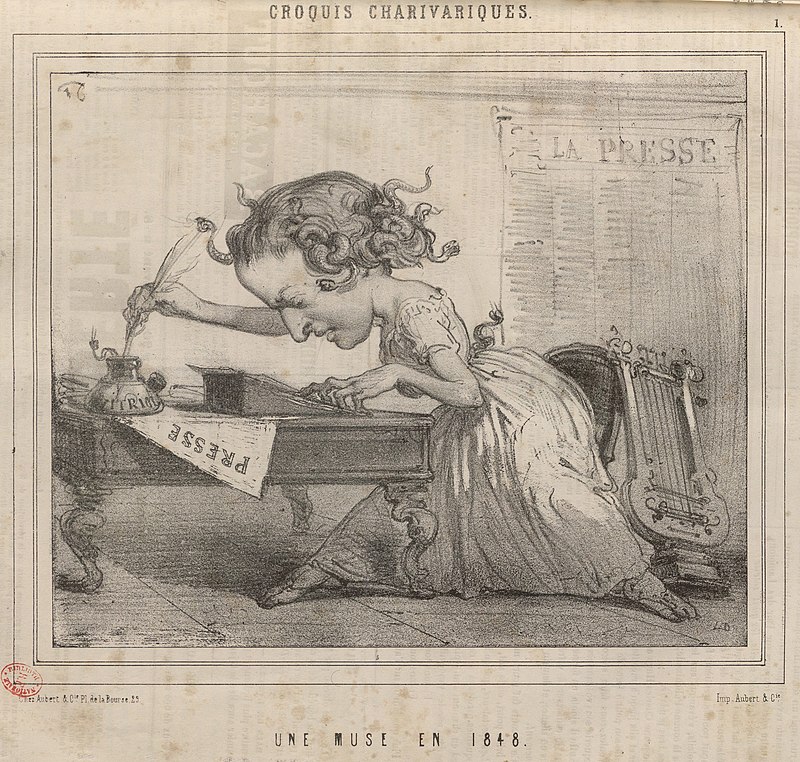
« L’anniversaire du 29 juillet », 1837 / Paris-Louvre-Invalides
Delphine GAY

Sous le pseudonyme du vicomte Charles de Launay, Delphine Gay (1804-1855) publia dans La Presse son Courrier français (1836-1848), un feuilleton hebdomadaire léger et piquant, remarqué pour la justesse de ses vues sur la société parisienne. Toujours « au rebours du lieu commun », d’après Sainte-Beuve, la feuilletoniste avait le don des « mots heureux, imprévus, tout à fait drôles ». En 1837, les célébrations de Juillet se déroulent par un temps pluvieux et froid duquel l’écrivaine tire l’une des belles pages consacrées à peindre la Seine vue depuis le quai d’Orsay. Poète primée, romancière respectée, c’est par l’écriture de textes comme celui-ci, paru le 3 août 1837 dans les pages du quotidien de son mari, que Mme Émile de Girardin s’imposa au souvenir du siècle. L’auteure ne se doutait pas que son diagnostic d’hydrophobie parisienne serait bientôt rendu caduc par la mode des bains et du canotage en Seine.
« Rien de plus étrange, du haut des tribunes, que ce peuple caché sous une vaste écaille de parapluies tous de même couleur ; on aurait dit une immense baleine au bord de la rivière ; il y avait tant de monde et la foule était si pressée, qu’un même parapluie abritait cinq ou six personnes. En France, le parapluie est monotone. Ce n’est pas comme en Italie ; là, quelle indépendance ! des parapluies rouges, verts, bleus, jaunes, roses, orange, pistache. La foule, ainsi abritée, ressemble à un parterre de riches anémones. Chez nous, le parapluie est sévère, il n’a rien de flatteur aux yeux ; on voit qu’il ne sort qu’au jour de tristesse ; son nom le dit : parapluie. En Italie, il se nomme ombrella.
L’orage cessa au moment où̀ nous entrâmes dans le pavillon. Nos places étaient excellentes, et le spectacle était charmant. Nous voudrions bien vous en donner une idée, non pas à vous, Parisiens qui savez tout, ou qui ne tenez pas à savoir, mais à vous, amis de province, dont nous sommes ici le fidèle correspondant. D’abord, dans le fond du tableau, les Tuileries, une ligne d’arbres, toute la terrasse du Bord de l’eau ; sur le mur de la terrasse, une foule pressée, se tenant par miracle sur cet espace étroit, au bord d’un précipice. […] Sur les quais, cinq grandes colonnes disant en lettres d’or 27, 28, 29 juillet 1830, et des milliers de drapeaux tricolores répétant 27, 28, 29. Sur le bleu 27, le blanc 28, sur le rouge 29. C’est très commode d’avoir trois couleurs quand on a trois jours glorieux à célébrer. Les pavillons étaient tendus en rouge et ornés de grosses lanternes bleues, blanches et rouges qui faisaient un effet charmant. Mais ce n’était rien encore : c’est la Seine qui était jolie et coquette avec ces longues barques, avec ces grands bateaux à vapeur pavoisés de bandelettes et de flammes de toutes couleurs, avec ses mariniers, sa musique militaire, avec ses nageurs invisibles dont le drapeau léger avait l’air d’un papillon tricolore voltigeant au milieu des flots ; avec ces mauvais plaisants qui naviguaient dans un tonneau, ramant en cadence avec leurs bras ; qui, lorsque le tonneau s’emplissait, disparaissaient gaiement dans la Seine aux grands applaudissements de la foule. Oh oui ! la Seine était bien belle ainsi, et nous nous demandions pourquoi le beau fleuve joue un si petit rôle dans les plaisirs de Paris. La Tamise est tous les jours en fêté à Londres ; les promenades en bateau y sont un délice, et chez nous elles sont inconnues : d’où̀ vient cela ? il y a sans doute une raison à cette absence des plaisirs aquatiques, dans une ville où l’on aime tous les plaisirs ; peut-être sommes-nous hydrophobes ? »
GAY, Delphine. « L’anniversaire du 29 juillet » [1837], Lettres parisiennes, dans Œuvres complètes, Paris, Plon, 1861, t. IV, p. 153-160
En ligne
19th century | Historiography | On | Along
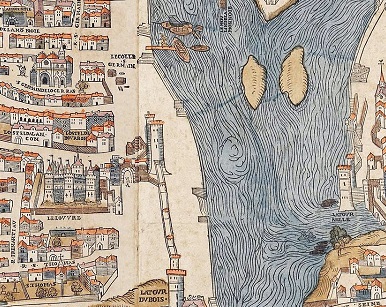
La Tour de Nesle, 1832 / Paris-Louvre-Invalides
Alexandre DUMAS

According to the popular tradition echoed by François Villon, an indeterminate queen, but most often thought to be Margaret of Burgundy (1290–1315), was watching passers-by from the top of the Tour de Nesle (The Tower of Nesle). Her Highness invited the ones she liked, welcomed them there and then had them thrown into the Seine to hide her debauchery. The 25-meter-high tower on stilts jutted out into the Seine: which was perfect for getting rid of dead bodies… The legend partly stems from an affair of state dating back to 1314: the charge of adultery laid against Philip the Fair’s three daughters-in-law by his only daughter, Isabella of France, who had revealed those villainies were taking place in the Tour de Nesle. Directly inspired from this, Alexandre Dumas (1802–1870) offered in 1832 a historical drama in five acts portraying Margaret of Burgundy as a femme fatale thirsty for one-night trysts. In the second act, Gautier, the new favorite of the queen, is looking for his twin brother Philip of Aunay, whose body would be fished out…
ACTE II. Scène II
GAULTIER, PIERREFONDS, SAVOISY, RAOUL, courtisans, puis MARIGNY.
SAVOISY.
Ah ! Gaultier nous avait devancés, et c’est juste… Comment va ce matin la Marguerite des Marguerites… la reine de France, Navarre et Bourgogne ?
GAULTIER.
Je ne sais, messieurs, j’arrive ; j’espérais voir mon frère au milieu de vous… Salut, messieurs, salut ; quelles nouvelles ce matin ?
PIERREFONDS.
Rien de bien nouveau… Le roi arrive demain : il aura une belle entrée dans sa bonne ville. Les ordres sont donnés par messire de Marigny pour que le peuple soit joyeux et crie Noël sur son chemin : en attendant, il crie malédiction sur les bords de la Seine.
GAULTIER.
Et pourquoi ?
SAVOISY.
Le fleuve vient de jeter encore un noyé sur sa rive, et le peuple se lasse de cette étrange pêche.
PIERREFONDS.
Ce sont autant d’anathèmes qui retombent sur ce damné Marigny, qui est chargé de la sûreté de Paris… Ma foi, les morts seront les bien venus si nous pouvons étouffer le premier ministre sous un tas de cadavres.
GAULTIER, remontant vers les courtisans.
Il se passe d’étranges choses !… Personne de vous n’a vu mon frère, messieurs ?
PIERREFONDS.
C’est que si le roi n’y prend pas garde, messeigneurs, il perdra par eau le tiers de sa population, la plus noble et la plus riche. Quel diable de vertige pousse donc nos gentilshommes à pareille fin, bonne au plus pour les jeunes chats et les manants ?
SAVOISY.
Oh ! messeigneurs, iriez-vous croire que ceux qui sortent morts de la Seine y descendent volontairement vivants ? Non pas.
PIERREFONDS.
À moins qu’ils n’y soient menés par des démons et des feux follets, je ne vois pas trop…
SAVOISY.
La rivière est une indiscrète qui ne conserve pas les secrets qu’on lui confie. On a plutôt creusé une tombe dans l’eau que dans la terre : seulement l’eau rejette, et la terre garde. Depuis l’hôtel Saint-Paul jusqu’au Louvre, il y a bien des maisons qui baignent leurs pieds dans l’eau, et bien des fenêtres à ces maisons !
SIRE RAOUL.
Le seigneur de Savoisy a raison, et la tour de Nesle pour son compte…
SAVOISY.
Oui, je suis passé à deux heures du matin au pied du Louvre, et la tour de Nesle était brillante, les flambeaux couraient sur ses vitraux ; c’était une nuit de fête à la tour. Je n’aime pas cette grande masse de pierre qui semble, la nuit, un mauvais génie veillant sur la ville ; cette grande masse immobile, jetant par intervalles du feu par toutes ses ouvertures comme ferait un soupirail de l’enfer, silencieuse sous le ciel noir, avec sa rivière bouillonnante à ses pieds. Si vous saviez ce que le peuple raconte…
DUMAS, Alexandre. La Tour de Nesle [1832], dans Œuvres d’Alexandre Dumas, Bruxelles, Meline, Cans et cie, 1838, t. II, p. 339.
En ligne
19th century | Play | In | Under
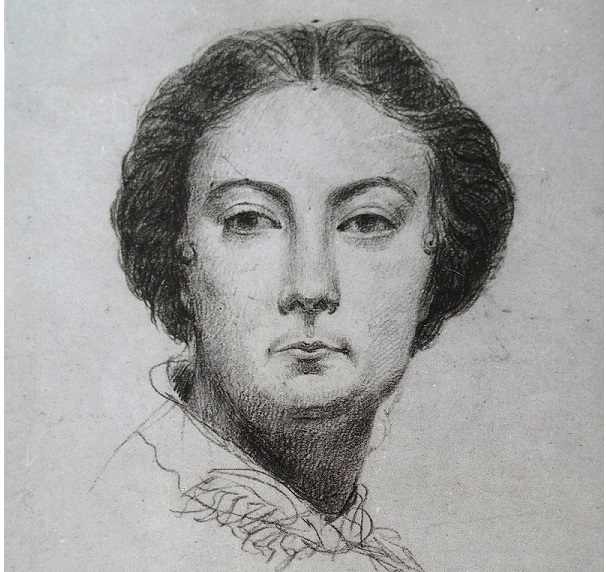
La Statue d’Apollon, 1863 / Paris-Louvre-Invalides
Claude VIGNON

he suggests they go on an excursion. The ensuing dialogue between them soon turns into a lecture: the comte gives his wife a thorough explanation of the commercial advantages of river transportation. However, laid out in a gentle tone, the information he conveys tells us not only about Parisian port activity in the 19th century, but also about the crucial role the Seine will continue to play despite the advent of faster means of transport. The wish to document can be felt in certain excerpts of this longer short story that Noémi Cadiot (1828-1888), under the pseudonym Claude Vignon, classes among her “tales of real life”. At least the details provided by this writer, who is very skilled in the art of describing landscapes, are first-hand: the novelist is first known for being a sculptor.
— "Voulez-vous faire, aujourd’hui, une excursion à Carrare, pour y voir sauter à la mine les énormes blocs de marbre blanc qui fournissent la statuaire européenne, et dont une grande partie vient débarquer à Paris, quai d’Orsay, en face de vos fenêtres ?…
— Et comment le marbre de Carrare peut-il arriver à Paris par la Seine ? il me semble que sa voie la plus directe serait le chemin de fer, qui le prendrait à Marseille pour le déposer boulevard Mazas.
— Oui ; mais, ma chère, la ligne droite, qui est le plus court chemin d’un point à un autre, n’est pas toujours le plus économique. Or, vous savez l’énorme différence du prix des transports, par eau ou par terre. Ces blocs, qui pèsent plusieurs milliers de kilogrammes, ne se manœuvrent qu’avec des peines infinies. Les frais de débarquement, de chargement, de transport, doubleraient le prix du marbre déjà si cher…
— Mais alors…
— Alors, vous allez voir tout à l’heure des montagnes de marbre blanc, grandes et hautes comme des alpes. […]
Eh bien ! la mine […] fait, d’heure en heure, sauter d’énormes quartiers de marbre. Ces quartiers, des hommes adroits et forts les roulent jusqu’à un torrent qui a tracé son lit entre les deux montagnes et descend à la mer, comme tous les torrents qui roulent des Alpes à la Méditerranée. Le lit de ce torrent, c’est le chemin que prend le marbre pour arriver au port. Des bœufs, attelés par troupeaux, remorquent les blocs, et les traînent jusqu’au vaisseau où on les embarque. Quelquefois, ces bœufs restent plusieurs jours attelés à un seul morceau de marbre. Lorsqu’un bateau a son chargement, il prend le large et va pourtourner l’Espagne par le détroit de Gibraltar, côtoie le Portugal, traverse le golfe de Gascogne, et gagne le Havre. Là, il entre en Seine, et remonte jusqu’à Paris. Voilà comment vous voyez, de votre balcon, fonctionner la grue qui enlève les blocs sur le pont du bateau et les dépose sur la berge.
— Allons voir Carrare ! s’écria la comtesse de Morelay."
VIGNON, Claude. La Statue de Napoléon [1863], dans Œuvres : Nouvelles, notice de Jules Simon, Paris, Lemerre, 1891, p. 148
En ligne
19th century | Novel, short story | On | Along
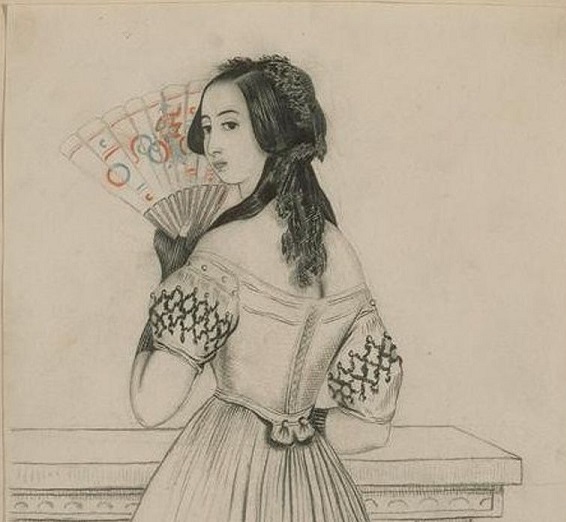
Indiana, 1832 / Paris-Louvre-Invalides
George SAND

Indiana (1832) is the first novel written solely by George Sand (1804–1876). It is also the first one she signed with her pseudonym “G. Sand.” In chapter XXI, the eponymous protagonist decides to leave Paris for Bourbon Island (today known as Reunion Island). The goal for Indiana is to escape an unbearable life. Married to an old colonel, seduced by her maid Noun’s heartthrob, she leaves her lover’s home in search of an expedient.
"[…] Aux premiers pas qu’elle fit dans la rue, elle sentit ses jambes tremblantes prêtes à lui refuser le service ; il lui semblait à chaque instant sentir la rude main de son mari furieux la saisir, la renverser et la traîner dans le ruisseau. Bientôt le bruit du dehors, l’insouciance des figures qui se croisaient autour d’elle, et le froid pénétrant du matin, lui rendirent la force et la tranquillité, mais une force douloureuse, et une tranquillité morne, semblable à celle qui s’étend sur les eaux de la mer, et dont le matelot clairvoyant s’effraie plus que des soulèvements de la tempête. Elle descendit le quai depuis l’Institut jusqu’au Corps Législatif ; mais elle oublia de traverser le pont, et continua à longer la rivière, absorbée dans une rêverie stupide, dans une méditation sans idées, et poursuivant l’action sans but de marcher devant elle.
Insensiblement elle se trouva au bord de l’eau, qui charriait des glaçons à ses pieds et les brisait avec un bruit sec et froid sur les pierres de la rive. Cette eau verdâtre exerçait une force attractive sur les sens d’Indiana. On s’accoutume aux idées terribles ; à force de les admettre, on s’y plaît. Il y avait si longtemps que l’exemple du suicide de Noun apaisait les heures de son désespoir, qu’elle s’était fait du suicide une sorte de volupté tentatrice. Une seule pensée, une pensée religieuse, l’avait empêchée de s’y arrêter définitivement ; mais dans cet instant aucune pensée complète ne gouvernait plus son cerveau épuisé. Elle se rappelait à peine que Dieu existât […], et elle marchait, se rapprochant toujours de la rive, obéissant à l’instinct du malheur et au magnétisme de la souffrance.
Quand elle sentit le froid cuisant de l’eau qui baignait déjà sa chaussure, elle s’éveilla comme d’un état de somnambulisme, et, cherchant des yeux où elle était, elle vit Paris derrière elle, et la Seine qui fuyait sous ses pieds, emportant dans sa masse huileuse le reflet blanc des maisons et le bleu grisâtre du ciel. Ce mouvement continu de l’eau et l’immobilité du sol se confondirent dans ses perceptions troublées, et il lui sembla que l’eau dormait et que la terre fuyait. […] Alors un homme qui accourait, guidé par la voix du chien, la saisit par le corps, l’entraîna, et la déposa sur les débris d’un bateau abandonné à la rive."
SAND, George, Indiana [1832], dans Œuvres illustrées de George Sand, préfaces et notices nouvelles par l’auteur, dessins de Tomny Johannot, Paris, J. Hetzel, 1853, t. III, p. 53.
En ligne
19th century | Novel, short story | In | Along | Under
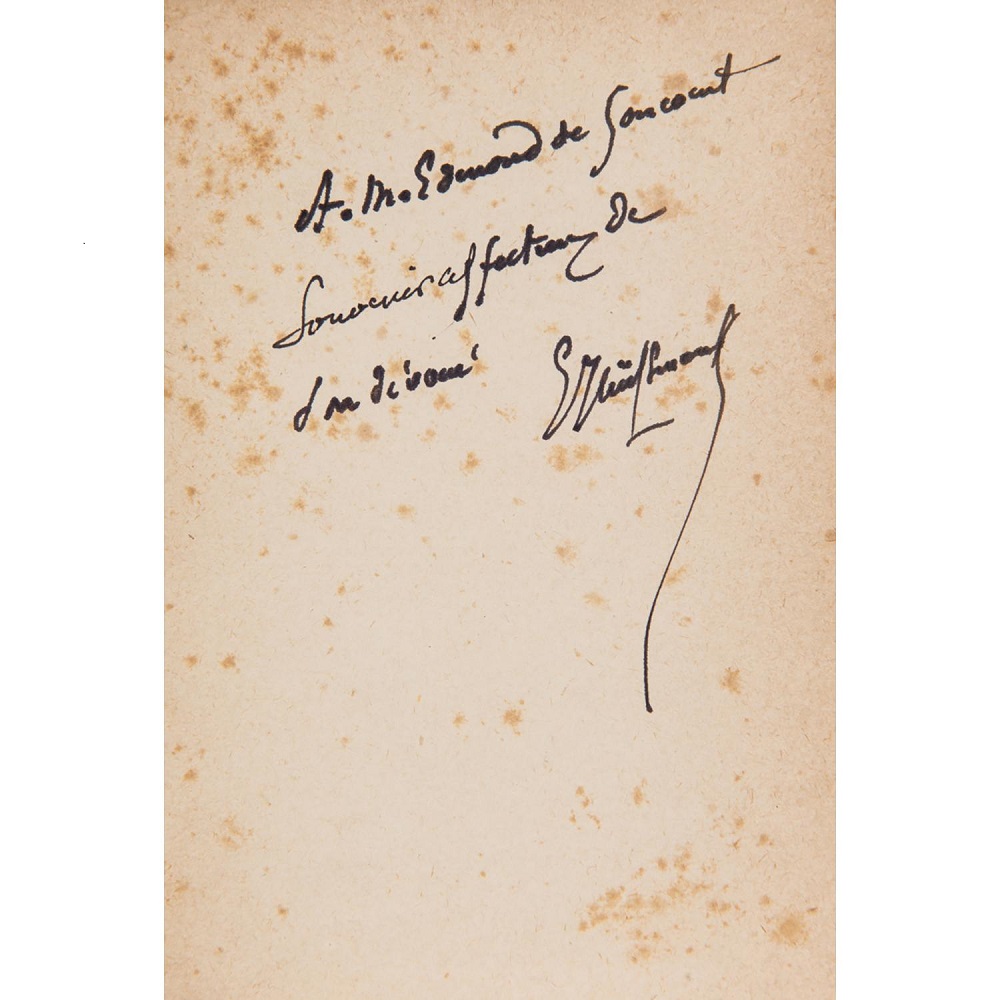
À vau-L’eau / Paris-Louvre-Invalides
Karl-Joris HUYSMANS

“Huysmans was a meticulous observer; he had, more than anyone else, the gift of seeing and of seeing things well; his sharp eye searched and twisted both men and things. Moreover, he had a passion for accuracy, and he would go shopping in Paris to check the colour of a door or the height of a house. He would have considered it a kind of literary crime to describe what he had not seen, with his own eyes,” Remy de Gourmont relates. The short novel A vau-l’eau (1882) offers an overview of this talent with a short but tonic description of the Seine as seen from the left bank. In his famous “microlecture” (short reading or interpretation), Jean-Pierre Richard (1922–2019) analysed the perverse pleasure of the banks of the Seine presented here as the only moment of real happiness that Joris-Karl Huysmans (1848–1907) granted to M. Folantin.
Tant bien que mal, il atteignait la fin de l’hiver et la vie devint plus indulgente ; l’intimité des intérieurs cessait et M. Folantin ne regretta plus si vivement les douillettes somnolences au coin du feu ; ses promenades le long des quais recommencèrent.
Déjà les arbres se dentelaient de petites feuilles jaunes ; la Seine, réverbérant l’azur pommelé du ciel, coulait avec de grandes plaques bleues et blanches que coupaient, en les brouillant d’écume, les bateaux-mouches. Le décor environnant semblait requinqué. Les deux immenses portants, représentant, l’un, le pavillon de Flore et toute la façade du Louvre ; l’autre, la ligne des hautes maisons jusqu’au Palais de l’Institut, avaient été ranimés et comme repeints et la toile du fond, de nouveau tendue, découpait sur un outremer adouci, tout neuf, les poivrières du Palais de Justice, l’aiguille de la Sainte-Chapelle, la vrille et les tours de Notre-Dame.
M. Folantin adorait cette partie du quai, comprise entre la rue du Bac et la rue Dauphine ; il choisissait un cigare, dans le débit de tabac situé près de la rue de Beaune, et il musait, à petits pas, allant un jour à gauche, fouillant les boîtes des parapets, et un autre jour à droite, consultant les rayons, en plein vent, des livres en boutique.
HUYSMANS, Joris-Karl, A vau-l’eau [1882], dans Croquis parisiens, A vau-l’eau, Un dilemme, Paris, P.-V. Stock, 1905, p. 193-194.
En ligne
19th century | Novel, short story | Along

L’Oeuvre / Paris-Louvre-Invalides
Emile ZOLA

One day, as Christine and her husband are having their usual walk along the docks, Claude is entranced by the spectacle he is seeing from the Pont des Saint-Pères (former name of the Pont du Carrousel). There it is, the work that needs to be done, the painter says to himself. In The Masterpiece (1886), a novel about artistic creation, the protagonist’s quest is to possess this site through painting. The reader will see many versions of it. The Seine is a vast and ever-changing canvas on which Émile Zola (1840–1902) likes to test his great talent as a descriptor. As for the captivated hero, it is to this Seine that he will remain (too) attached.
Au pont des Saints-Pères, Claude, désespéré, s’arrêta. Il avait quitté le bras de Christine, il s’était retourné vers la pointe de la Cité. Elle sentait le détachement qui s’opérait, elle devenait très triste ; et, le voyant s’oublier là, elle voulut le reprendre.
— Mon ami, rentrons, il est l’heure… Jacques nous attend, tu sais.
Mais il s’avança jusqu’au milieu du pont. Elle dut le suivre. De nouveau, il demeurait immobile, les yeux toujours fixés là-bas, sur l’île continuellement à l’ancre, sur ce berceau et ce cœur de Paris, où depuis des siècles vient battre tout le sang de ses artères, dans la perpétuelle poussée des faubourgs qui envahissent la plaine. Une flamme était montée à son visage, ses yeux s’allumaient, il eut enfin un geste large.
— Regarde ! regarde !
D’abord, au premier plan, au-dessous d’eux, c’était le port Saint-Nicolas, les cabines basses des bureaux de la navigation, la grande berge pavée qui descend, encombrée de tas de sable, de tonneaux et de sacs, bordée d’une file de péniches encore pleines, où grouillait un peuple de débardeurs, que dominait le bras gigantesque d’une grue de fonte ; tandis que, de l’autre côté de l’eau, un bain froid, égayé par les éclats des derniers baigneurs de la saison, laissait flotter au vent les drapeaux de toile grise qui lui servaient de toiture. Puis, au milieu, la Seine vide montait, verdâtre, avec des petits flots dansants, fouettée de blanc, de bleu et de rose. Et le pont des Arts établissait un second plan, très haut sur ses charpentes de fer, d’une légèreté de dentelle noire, animé du perpétuel va-et-vient des piétons, une chevauchée de fourmis, sur la mince ligne de son tablier. En dessous, la Seine continuait, au loin ; on voyait les vieilles arches du Pont-Neuf, bruni de la rouille des pierres ; une trouée s’ouvrait à gauche, jusqu’à l’île Saint-Louis, une fuite de miroir d’un raccourci aveuglant ; et l’autre bras tournait court, l’écluse de la Monnaie semblait boucher la vue de sa barre d’écume. Le long du Pont-Neuf, de grands omnibus jaunes, des tapissières bariolées, défilaient avec une régularité mécanique de jouets d’enfants. Tout le fond s’encadrait là, dans les perspectives des deux rives : sur la rive droite, les maisons des quais, à demi cachées par un bouquet de grands arbres, d’où émergeaient, à l’horizon, une encoignure de l’Hôtel de Ville et le clocher carré de Saint-Gervais, perdus dans une confusion de faubourg ; sur la rive gauche, une aile de l’Institut, la façade plate de la Monnaie, des arbres encore, en enfilade. Mais ce qui tenait le centre de l’immense tableau, ce qui montait du fleuve, se haussait, occupait le ciel, c’était la Cité, cette proue de l’antique vaisseau, éternellement dorée par le couchant. En bas, les peupliers du terre-plein verdissaient en une masse puissante, cachant la statue. Plus haut, le soleil opposait les deux faces, éteignant dans l’ombre les maisons grises du quai de l’Horloge, éclairant d’une flambée les maisons vermeilles du quai des Orfèvres, des files de maisons irrégulières, si nettes, que l’œil en distinguait les moindres détails, les boutiques, les enseignes, jusqu’aux rideaux des fenêtres. Plus haut, parmi la dentelure des cheminées, derrière l’échiquier oblique des petits toits, les poivrières du Palais et les combles de la Préfecture étendaient des nappes d’ardoises, coupées d’une colossale affiche bleue, peinte sur un mur, dont les lettres géantes, vues de tout Paris, étaient comme l’efflorescence de la fièvre moderne au front de la ville. Plus haut, plus haut encore, par-dessus les tours jumelles de Notre-Dame, d’un ton de vieil or, deux flèches s’élançaient, en arrière la flèche de la cathédrale, sur la gauche la flèche de la Sainte-Chapelle, d’une élégance si fine, qu’elles semblaient frémir à la brise, hautaine mâture du vaisseau séculaire, plongeant dans la clarté, en plein ciel.
— Viens-tu, mon ami ? répéta Christine doucement.
Claude ne l’écoutait toujours pas, ce cœur de Paris l’avait pris tout entier. La belle soirée élargissait l’horizon. C’étaient des lumières vives, des ombres franches, une gaieté dans la précision des détails, une transparence de l’air vibrante d’allégresse. Et la vie de la rivière, l’activité des quais, cette humanité dont le flot débouchait des rues, roulait sur les ponts, venait de tous les bords de l’immense cuve, fumait là en une onde visible, en un frisson qui tremblait dans le soleil. Un vent léger soufflait, un vol de petits nuages roses traversait très haut l’azur pâlissant, tandis qu’on entendait une palpitation énorme et lente, cette âme de Paris épandue autour de son berceau.
Alors, Christine s’empara du bras de Claude, inquiète de le voir si absorbé, saisie d’une sorte de peur religieuse ; et elle l’entraîna, comme si elle l’avait senti en grand péril.
— Rentrons, tu te fais du mal… Je veux rentrer.
Lui, à son contact, avait eu le tressaillement d’un homme qu’on réveille. Puis, tournant la tête, dans un dernier regard :
— Ah ! mon Dieu ! murmura-t-il, ah ! mon Dieu ! que c’est beau !
19th century | Novel, short story | Along
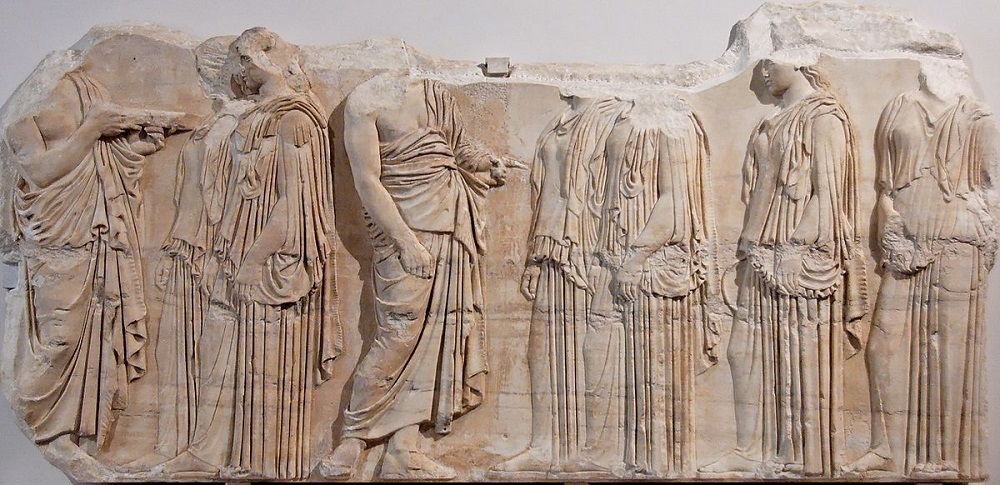
Les Prêtresses des Panathénées / Paris-Louvre-Invalides
Anna De NOAILLES

The title of one of the poems from the collection published by Anna de Noailles (1876–1933) in 1907 references a bas-relief acquired by the Louvre in 1789. Of considerable size (1m x 2m), the so-called plaque of the Ergastines depicts a procession of six young girls tasked with weaving the peplos offered to the goddess Pallas Athena during the Great Panathenaea festival in honour of Athens. Found at the foot of the Parthenon, the block of sculpted marble was once part of its decorative frieze. The intertext with this work from the fifth century BC, seen as an example of classic art, orchestrates a powerful reconfiguration of the classic tropes of the literary Seine, invariably used to embody the French nation through synecdoche. Through Anna de Noailles’ writing, characters from ancient mythology are no longer called upon to migrate to the Seine to exemplify or praise modern France, rather, they are already exiled there; and suddenly, they become “future idols” for the dazzled poet who has only just noticed their presence !
Je vous vois aujourd’hui pour la première fois,
Et levant mes mains étonnées,
Je vous adore avec mon extase et ma voix,
Prêtresses des Panathénées !
Ô sublime candeur, vous passez lentement ;
Votre robe où mes yeux s’abreuvent,
Ruisselle, coule, luit, — divin allongement —
Comme les rayons et les fleuves !
Vos membres effilés, votre frêle épaisseur
Semblent la surface des sources ;
Immobiles, pourtant vous glissez, ô douceur,
Comme le soleil fait sa course.
Vos bras abandonnés et votre main qui pend,
Suivent les plis de vos toniques,
Ô roseaux enflammés, ô flûte du dieu Pan,
Ô mystérieuses musiques !
Vous êtes moins des corps que des ruisseaux de miel,
Que des gerbes de seigle tendre,
Que des jasmins dorés, que des pentes du ciel
Où la lumière vient s’étendre.
Ni la Vierge Marie, assise auprès d’un lis
Et jouant avec de doux gestes,
Ni le rire enfantin et grave de son fils,
N’ont votre pureté céleste.
Dans le triste Musée où pâlissent vos jours,
Promeneuses du ciel attique,
Regrettez-vous les secs et limpides contours
Des collines et du Portique ?
Songez-vous aux bergers assis au bord de l’eau,
Au potier près d’un toit qui fume,
A la brebis laineuse allaitant un agneau,
A la mer, fileuse d’écume…
Vous ne reverrez pas votre coteau natal ;
Jamais un peuple au son des flûtes
Ne vous ramènera, cortège triomphal,
Sur la noble terre où vous fûtes.
Ah ! du moins, demeurez chez les Francs aux beaux yeux,
Près de la Seine sinueuse,
Où la clarté de l’air, où la douceur des cieux
Rappellent votre rive heureuse.
Demeurez, nymphes d’or, perles des jours sacrés,
Ô filles du chantant Homère !
Flottez sur la cité, rayonnez sur les prés,
Reposez-vous sous la fougère.
Ah ! que j’aille tresser une corbeille d’or,
Et que pour vous l’offrir j’y mette
Les roses de Délos, les figues de Luxor,
Les serpolets du mont Hymette !
D’autres prêtres, courbés auprès de lourds autels
Illuminés comme un théâtre,
Brûlent devant des dieux moins que vous immortels
Votre encens laiteux et bleuâtre.
– Mais vous, claire Pallas, ô porteuse de lin,
Ô noblesse de la nature,
Aurore aux lèvres d’or, ruissellement divin,
Vous êtes l’Idole future !
NOAILLES, Anna de. « Les prêtresses des Panathénées (Au Musée du Louvre) », Les Éblouissements, Paris, Calmann-Lévy, 1907, p. 143-145.
20th century | Poems | Along
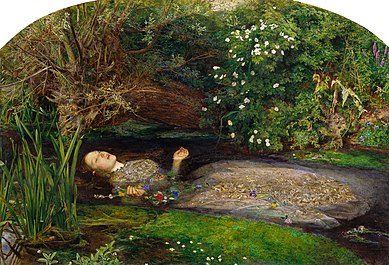
L’Inconnue de la Seine / Paris-Louvre-Invalides
Anonymous

Céline Walter (1972-) takes over the myth of L’Inconnue de la Seine (the Unknown Woman of the Seine) and makes it a story that is both personal and universal. Her collection, published in 2016 under the title L’Inconnue de la Seine, is divided into four sections and features a preface by Éric de Laclos (1958-), which traces the confluence of currents that brought to light this new version of an old literary myth, in no way similar to the previous ones. In pieces, we search to no avail for the mask of the young girl with the ambiguous smile, we rake the moving waters of the text without finding the shred of reified imagination that we hoped to see floating. Then, at the turn of a page entitled Promesse (promise), we finally get to the heart of the subject, but it is no longer clear whether the drowned woman is the one who is writing. This rich purple, could it be the curtains from one of the palaces erected on the banks of the Seine towards the Pont Royal ?
D’une seule main
je soulève le cadavre
de ton bras
qui ne portera plus.
Même si je dors
encore
dans les eaux
et les tissus pourpres
juste en dessous
de ton soleil.
C’est fini.
WALTER, Céline, L’Inconnue de la Seine, Paris, tituli [édition numérique Kindle], [2016], np.
21st century | Poems | In | Under

Textes surréalistes / Paris-Louvre-Invalides
Antonin ARTAUD

In 1925, the magazine La Révolution surréaliste published this text by Antonin Artaud. This followed another text, written by Michel Leiris, presented like a fantastical glossary. Artaud welcomes the glossary and castigates the Académie française (the French literary academy), supplier of boring dictionaries. While it is fairly common to use the metonymy of “the Seine” when referring to the institution bordering the river, the metaphor of canals is more comical
Oui, voici maintenant le seul usage auquel puisse servir désormais le langage, un moyen de folie, d’élimination de la pensée, de rupture, le dédale des déraisons, et non pas un DICTIONNAIRE où tels cuistres des environs de la Seine canalisent leurs rétrécissements spirituels.
Antonin ARTAUD, Œuvres complètes I**, Textes surréalistes. Lettres, Paris, ©Gallimard, 1976, p. 34.
20th century | Poems
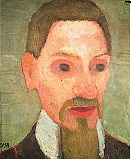
Les cahiers de Malte Laurids Brigge / Paris-Louvre-Invalides
Anonymous

In his 1910 work The Notebooks of Malte Laurids Brigge (Les cahiers de Malte Laurids Brigge), the Austro-Hungarian writer Rainer Maria Rilke (1875-1926) tells the tale of Malte, a young and poor Danish man who wanders through the capital’s streets. He records his memories and queries about life in his various notebooks. The face of the Unknown Woman of the Seine, spotted daily in a molder’s shop window near the Tuileries, is the source of this meditation.
Der Mouleur, an dem ich jeden Tag voruberkomme, hat zwei Masken neben seiner Tur ausgehängt. Das Gesischt der jungen Ertränkten, das man in der Morgue abnahm, weil es schön war, weil es lächelte, weil es so täuschend lächelte, als Wußte es. Und darunter sein wissendes Gesicht. Diesen harten knöten aus fest zusammengezogenen Sinnen. Diese unerbittliche Selbstverdichtung fortwährend ausdampfen wollender Musik. Das Antlitz dessen, dem ein Gott das Gehör verschlossen hat, damit es keine Klange gabe, außer seinen. Damit er nicht beirrt wurde duch das Trübe und Hinfällige der Geräusche. Er, in dem ihre Klarheit und Dauer war ; damit nur die tonlosen Sinne ihm Welt eintrugen, lautlos, eine gespannte, wartende Welt, unfertig, vor der Erschaffung des Klanges.
Weltvollendender : wie, was als Regen fällt uber die Erde und an die Gewässer, nachlässig niederfallt, zufällig fallend, – unsichtbarer und froh von Gesetz wieder aufstehend aus allem und steigt und schwebt und die Himmel bildet: so erhob sich aus dir der Aufstieg unserer Niederschlage und umwölbte die Welt mit Musik.
Le mouleur devant la boutique duquel je passe tous les jours a accroché deux masques devant sa porte. Le visage de la jeune noyée que l’on moula à la morgue, parce qu’il était beau, parce qu’il souriait, parce qu’il souriait de façon si trompeuse, comme s’il savait. Et en dessous, l’autre visage qui sait. Ce dur nœud de sens tendus à rompre. Cette implacable condensation d’une musique qui sans cesse voudrait s’échapper. Le visage de celui à qui un Dieu a fermé l’ouïe pour qu’il n’y ait plus de sons hors les siens ; pour qu’il ne soit pas égaré par le trouble éphémère des bruits. Lui qui contenait leur clarté et leur durée ; pour que seuls les sens inaptes à saisir le son ramènent le monde vers lui, sans bruit, un monde en suspens, en expectative, inachevé, d’avant la création du son.
Finisseur du monde, ainsi que ce qui tombe en pluie sur la terre et les eaux, qui, négligemment, par hasard se dépose, se relève de partout, moins visible et joyeux d’obéir à sa loi, et monte et flotte et forme le ciel : de même s’éleva hors de toi la montée de nos chutes, et de musique envoûta le monde.
Rainer Maria RILKE, Die Aufzeichningen des Malte Laurids Brigge [1910], Insel Verlag Berlin, 2012, p. 70.
Rainer Maria RILKE, Les Cahiers de Malte Laurids Brigge, traduit de l’allemand par Maurice Betz, Paris, ©Éditions du Seuil, 1996, Points-Seuil, p. 72
20th century | Novel, short story | In
